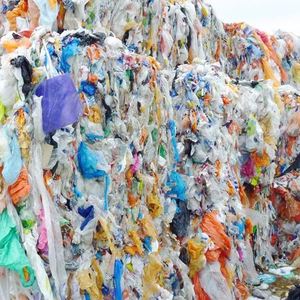Neste aims to use waste plastic for fuels, new plastic production

Photo: Neste Corp.
July 18, 2018
BY Neste Corp.
Neste, the world’s leading producer of renewable diesel, is now exploring ways to introduce liquefied waste plastic as a future raw material for fossil refining. The aim of the development project is to proceed to industrial-scale trial during 2019. The company’s target is to process annually more than 1 million tons of waste plastic by 2030.
“Neste has been ranked the world’s second most sustainable company and we are already the world’s largest producer of renewable diesel from waste and residues,” said Matti Lehmus, executive vice president of Neste’s Oil Products business area. “Our target is to also be a leader in low-carbon refining and support a circular economy by developing innovative solutions based on waste plastic. With our strong legacy in raw material and pretreatment research, we are in a unique position to introduce waste plastics as a new raw material for fossil refining. At the same time, we aim to provide solutions to support global plastic waste reduction.”
Using waste plastic as a raw material increases material efficiency, reduces crude oil dependency and carbon footprint of products based on such raw material.
Advertisement
Advertisement
In Europe, some 27 million tons of post-consumer plastic waste is generated annually. Only about one-third of this amount is currently collected for recycling.
In January, the European Union released its Strategy for Plastics in a Circular Economy. One of its objectives is to increase recycling of plastics and reuse of plastic packaging by 2030. In the EU Waste package, recycling target for plastic packaging was raised to 50 percent by 2025 and 55 percent by 2030.
“In order to reach the ambitious EU plastics recycling targets, both chemical and mechanical recycling need to be recognized in the EU regulation,” Lehmus said.
Chemical recycling means using waste plastics as raw material for the refining and petrochemical industries to convert them into end products such as fuels, chemicals and new plastics. Chemical recycling can create new outlets for plastic waste by enabling high-end product qualities, thereby complementing traditional mechanical recycling.
Advertisement
Advertisement
Reaching industrial-scale production of products from plastic waste still requires development of technologies and value chains. To accelerate development, Neste is looking for partners across the value chain, for example in waste management and upgrading technologies.
“Circular economy is built upon joint efforts,” Lehmus said. “We wish to partner with leading companies throughout the value chain, who share our sustainability values and ambition, and are ready to move forward with us.”
In addition to exploring ways to utilize plastic waste as raw material, Neste is helping the plastics industry and various plastics-consuming companies to reduce their crude oil dependency and climate emissions by producing durable and recyclable renewable plastics from biobased raw materials, such as waste fats and oils. As an example, Neste and IKEA will produce polypropylene (PP) plastic from fossil-free, biobased raw materials at commercial scale this fall. This will mark the first time in the world that biobased PP is produced at a commercial scale.
Related Stories
Neste Corp. on July 24 released second quarter results, reporting record quarterly renewable product sales volumes despite weaker margins. SAF sales were up nearly 80% when compared to the first quarter of 2025.
Valero Energy Corp. on July 24 released second quarter results, reporting a profitable three-month period for its ethanol segment. The renewable diesel segment posted a loss, but the company’s new sustainable aviation fuel (SAF) unit operated well.
The IRS on July 21 published a notice announcing the 2025 calendar-year inflation adjustment factor for the Section 45Z clen fuel production credit. The resulting adjustment boosts maximum the value of the credit by approximately 6%.
U.S. Secretary of Agriculture Brooke L. Rollins today announced the reorganization of the USDA, refocusing its core operations to better align with its founding mission of supporting American farming, ranching, and forestry.
The U.S. Department of Energy’s Office of Energy Efficiency and Renewable Energy is soliciting public comments on a preliminary plan for determining provisional emissions rates (PER) for the purposes of the 45Z clean fuel production credit.
Upcoming Events










